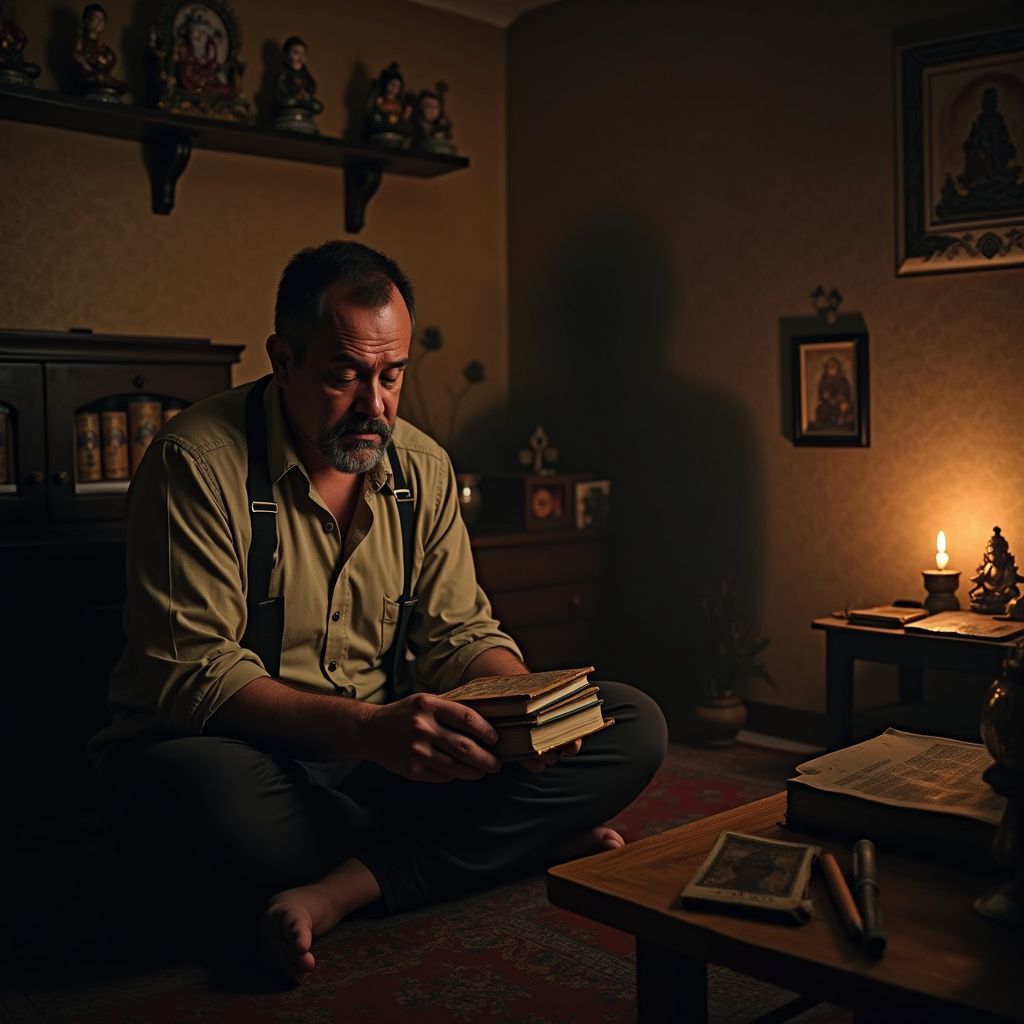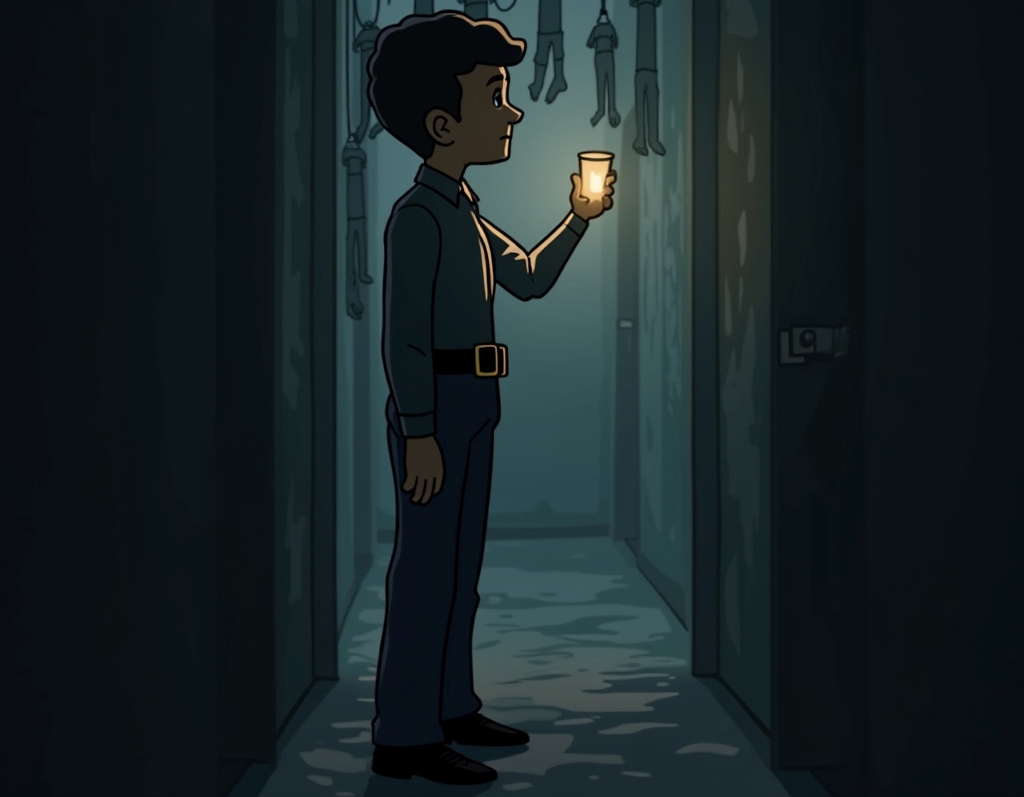This article is written by Oishika Banerji and further updated by Shweta Singh. This article outlines the details of the well-known Burari death case which shook the entire nation with the enigmatic nature of the case in 2018. It also highlights the opinions that the psychologists have regarding the incidents. In addition, this article discusses the history of similar incidents and the recent cases that emerged after the Burari death case.
Table of Contents
Introduction
In 2018, the horrifying case that made most of the headlines was the Burari death case. A family consisting of 11 members living in the Burari district of Delhi killed themselves by hanging, thereby committing mass suicide. When the news of the Burari death case circulated, it sparked massive speculation among the public regarding the mysterious deaths of the 11 members of the family. Media also sensationalised this case and propagated various aspects related to the incidents without factual support with the aim of attracting attention and increasing viewership.
However, true information regarding the Burari case and a deep inside story was revealed in a better way by Leena Yadav’s documentary on Netflix known as, ‘House of Secrets: the Burari Deaths.’ The death of Bhopal Singh in 2007 changed everything for the Bhatia family (also called the Chundawats), the family involved in the case. Before his death, the family was like any other middle-class family who was settled and looked after family affairs as any normal family would do. Many who were questioned during the investigation said that they felt that after the death of Bhopal Singh, the family had taken recourse to spirituality to come out of the hard times. But no one in the family could relate to exactly what happened within the Burari household.
In the article, an attempt has been made to highlight various facts and reasons from different eagles and perspectives through the use of information that was available. This article will help the readers understand the real reason behind what happened within the closed doors of the 11-member family.
Mysterious death of 11 members of a family
It was in the year 2018 on the 1st of July, when the horrific incident of the Burari deaths was witnessed by the whole country. The first ones who got to know about the incident were Gurcharan Singh, Kuldeep Singh, and Pritpal Kaur, who were the neighbours of the Bhatia family. When the neighbours noticed that neither the grocery shop which was owned by the Bhatia family was opened, the milk that the milk-man used to keep on their doorstep was not collected and nor the calls from the neighbours were being responded to, they got worried and went to their house to check on them.
When the neighbours visited their house they noticed that the main door was open and so they went upstairs. When they reached upstairs they were shocked to see that 10 members of the family hanged themselves from an iron grill on the ceiling and one member of the family was lying on the ground in another room near her bed. All the members were blindfolded and both their hands and feet were tied. They also had a dog, which they had tied on the terrace and who was barking continuously.
The family consisted of three generations. There were 11 members and all of them were living in the same house in Burari, Delhi. They all were well-educated and socially harmonious individuals. The oldest member of the family, Narayani Devi was a widow and had three sons and two daughters. Amongst them, only two sons and one daughter were living in that house. Between the two sons, Bhuvnesh was the elder and Lalit was the younger one. They were married to Savita and Tina respectively. Bhuvnesh and Sarita had two daughters and one son. Lalit and Tina had only one son. Pratibha, one of the daughters of Narayani Devi, who was living in that house had only one daughter.

Apart from owning the convenience store which was the main source of sustenance for the family, they also had a plywood business which was looked after by Lalit, the younger son. When asked by the reporter about the family, the neighbours stated that the family had a well-established business and was growing with every year. Everyone from their neighbours, relatives, and colleagues claimed that the family was religious and all the members were good-mannered, kind, and generous. They never had a fight with anyone outside or amongst themselves and were always ready to help anyone in need. The children of the family were good in academics and had good well-behaved character. The surviving members of the family, that is one son (Dinesh Singh Chundavat) and one daughter (Sujata) who do not stay in that house also claimed the same thing about this family.
The relatives of the family members were shocked and could not accept the fact that the family has been planning and attempting mass suicide for several days prior to the tragic incident. This non-acceptance was due to the fact that the family had hugely celebrated their daughter Priyanka’s engagement ceremony. Such a celebration took place just 14 days prior to the happening of the Burari death case.
Role played by the Delhi Police
This horrific incident which was presumed to be a suicide at an early stage was first witnessed by the neighbours of the family, who then informed the Head Constable of Burari police station, Mr. Rajeev Tomar. Witnessing the incident, he observed that the suicide was done in a way that depicted a banyan tree. When Manoj Kumar, who was a station house officer at Burari police station, was asked about the incident by news reporters said that he had never investigated such a case in his entire career. Police officers were confused with regard to the reason for the deaths. They did not find any proof to call it a case of burglary as all the female members of the family had their jewellery intact with them. They even could not assume it to be a case of suicide as all were blindfolded and there was no evidence of the suicide note.
After carefully examining the crime scene, the police informed the Forensic Science Laboratory (FSL, Delhi) about the horrifying incident. FSL Delhi arrived with their team of experts to capture and collect all the important evidence for further investigation. Finding the motive behind the deaths of the family members was the top priority for the police officials in order to solve this case. For this purpose, the CCTV footage of the camera that was placed on one of the walls of the house, and was front-facing the lane, was checked by the police. The CCTV footage was checked with the purpose of checking whether there was any entry of a third person in the crime scene and also to ensure that no third person was involved in the case. As per the footage of the CCTV camera, members of the family were seen buying essential goods like stools, wires, or bandages that had been used in hanging themselves which ultimately led to the death of the 11 family members. This footage was taken into consideration by the police to support the theory of mass suicide.
The police lodged an FIR for a murder case at the request of the surviving family members. The 11 bodies were packed and sent to the mortuary. The post-mortem report stated that all the members had died due to hanging and the oldest member of the family who was found lying on the floor had died due to partial hanging. The report also stated the presence of digestive waste in the large intestine, which nullifies any signs of stress or depression in the members of the family. This is proved as a person suffering from stress often has issues regarding digestion. After the inefficacy of the Delhi police in solving the case, it was transferred to the crime branch for further investigation. Dr. Joy N Tirkey (Deputy Commissioner of Police, Crime Branch, Delhi), along with his team, was vested with the responsibility of solving this case.
Investigation done by the crime branch
As already discussed, when the police officials were unable to solve the Burari death case, the case was transferred to the crime branch. The crime branch while conducting its investigation took into account every detail related to this case. In its investigation, it found several important facts that helped in solving this case.

They found that the eldest son of the family, Bhuvnesh, had tried to set his hands free which were found tied in the crime scene. A post-mortem report clearly showed signs of struggle in his fingers. All the children of the family were tied, both by the hands and feet, with the telephone wires. Their eyes and mouths were stuffed with cotton and no signs of struggle could be found among the children.
The body of Narayani Devi, who was the oldest member of the family, was found in the other room. Her body was half-turned and had a belt around her neck because of which there were certain marks on the side of her neck. All other members of the family hanged themselves with the help of a scarf tied around their neck.
The crime branch found evidence of the ritual that was performed by the family the night before their deaths. On searching the CCTV footage it was found that Tina, along with her son, went to buy four stools. Lalit’s son was seen opening the plywood store and taking some bundles of wires upstairs. In the kitchen, a packet of milk in the fridge and some soaked chana were found to be used by the family the next day. Lalit’s son had also recharged the phones of all the members of the family.
The most important evidence that was found was a register that was kept beside the temple in the house. 11 diaries were also found in the house that contained entries from the year 2007 to 2018 which is further discussed in detail in this article.
Absence of suicide note
Initially, when the police began investigating the Burari death case and no foul play could be ascertained, they believed it to be a case of suicide. However, due to the absence of a suicide note, the police could not conclude the case on that ground. The absence of a suicide note created confusion and added to the mystery surrounding the deaths of the 11 members of the family.
In any case, where the death has taken place, if a suicide note is present it explains the motive, and emotional state of an individual who has committed a suicide. It is of immense importance as it assists in providing insights into the final thoughts, reason, and intention behind the tragic incident The absence of a suicide note in the Burari case made the investigation difficult and opened the case for various doubts and speculations such as foul play, performance of rituals, and psychological breakdown as there was nothing to ascertain the intention behind committing such mass suicide.
Without the suicide note, the police were left to investigate the case on the basis of circumstantial evidence, statements of witnesses, and 11 diaries that pointed towards the presence of psychological factors.
Stories behind 11 diaries
The 11 diaries that were found at the crime scene were studied in detail by the crime branch and it was observed that the language that was used in the diary was in the form of conversation, commands, and instructions. The last page of the diary contained all the instructions that were required to be followed on the day at which the incident took place.
Bhopal Singh, the deceased father, was mentioned in the diary for the first time in the year 2007 on the 7th of September. The note stated that the deceased had asked the family to remember him through his black and white photograph by placing it in front of them.
The last entry in the diary which was made on the 24th of June in the year 2018 had a mention of a ritual known as the ‘Banyan Tree Ritual’. This ritual was mentioned to be followed for a period of seven days to be accompanied by the Badh Puja. Badh is originally a tree that has its roots hanging from the branches.

Concerning the Badh Puja, it was instructed that;
- The same would be religiously carried out for a period of seven days and if anybody would have come to visit the family then the puja was supposed to take place the following day.
- No one outside the family members should see the rituals related to puja.
- The puja should be performed in dim light and the eyes of all the members of the family shall remain completely shut throughout.
- While hanging themselves their eyes shall be blindfolded and mouths should be stuffed with handkerchiefs. It was further directed that while hanging themselves the mind of every member shall be focussed and no thought should be there. The mind should be completely empty.
- The oldest member of the family was allowed to perform such a task by lying on the floor because of her old age and being overweight.
- The puja should be performed while imagining the branches of the banyan tree wrapping the bodies of all the family members.
- The puja should be performed with complete determination and unity as this will help them repent of their mistakes.
The crime branch in their investigation tried contacting some persons who were related to the family and had religious or spiritual backgrounds but could not find any such contact. The diaries mentioned each and every detail regarding the conduct of every family member of the house in their daily lives.
Expert evidence regarding the Burari deaths case
Bhopal Singh, the husband of Narayani Devi and the head of the family died in 2007. After his death, there was no one in the family to guide the family members in their tough times. According to the observations made by Anita Anand, a clinical hypnotherapist, a vacuum is created in the family when the head of the family dies. Similarly, Bhopal Singh’s death created a void in the family as he was the one who used to look after everything for the family.
After the death of Bhopal Singh, it was Lalit who took over the role of his father. All the members of the family started following his command because they believed that despite being the youngest son he was more mature and had the ability to make effective decisions.
Through the statements given by the neighbours and other relatives of the family, it was found that Bhopal Singh was very amiable as a person. He had a broad mindset and he could have never asked for the fulfilment of such commands.
The first entry in the diary was made immediately after Bhopal Singh’s death. It was found that Lalit was the main focus of most of the entries or instructions laid down in the diary. The crime branch through their investigation noticed that the main role that was played in the incident was that of Lalit. While enquiring the neighbours about the nature and living style of the family, it was found that Neetu (one of the children) had told the neighbours about her uncle being possessed by their late grandfather’s spirit. Lalit used to have direct communication with his father in his dream, who used to guide him about how to handle the welfare of the family. He also used to tell his family members about the conversation so that everyone could follow the instructions given by Lalit’s father. While conversing the conversations and the instructions he had received from his father to his family he would imitate the voice of his father.
The copies of the diaries as discovered from the house were sent to the handwriting expert who revealed that most of the notes were prepared by Priyanka and Neetu who were the daughters of Prathibha and Bhuvnesh respectively.
The Chundawats changed their way of life as well. They stopped cooking and eating non-vegetarian food and some male members of the family who used to drink quit drinking. Performing rituals and other religious practices became a daily task. As a result, the number of shops owned by the family increased and their business expanded. The shops that were opened included Lalit’s plywood shop, a grocery shop which was owned by Bhuvnesh, and the family was going to open the third shop jointly.
The expert from whom suggestions were asked on the basis of the evidence collected by the crime branch observed that Lalit was the main link to the incident as everything was done according to his instructions which had supposedly been directed to him by his deceased father. Anita Anand also revealed that there were times when Lalit felt out of control implying his state of mind.
Role played by Lalit in the Burari death case

Lalit got some head injuries in a severe bike accident which he faced in 1988. The accident was so major that he was hospitalised for a long time and underwent acute medical treatment. His close friends told the police that due to the head injuries suffered, he would fall asleep very early.
On the 26th of March in 2004, Lalit went through another disturbing incident. Someone tried to kill him. He was in his plywood shop in Delhi when someone locked him up in the shop and was set ablaze. This incident was so traumatic for him that he lost his voice. According to Dr. Ambarish Satwik, who was a vascular surgeon, a person usually does not lose his voice provided there is some physical injury, trauma, or disease in the larynx.
As per the observation of Dr. Roma Kumar, in this case, the family had failed to seek professional help in order to treat and help Lalit recover from Post-Traumatic Stress Disorder (PTSD). Seeing Lalit’s mental condition, the doctor who was treating Lalit advised the family members to seek the assistance of a psychiatrist but the family didn’t take heed of the advice.
As per psychology, untreated trauma or psychological disturbance can subject the individual to psychosis, wherein the individual loses his rational abilities. The first major symptom of such a condition is that the person suffering from psychosis starts hearing voices. Lalit regained his voice just a year after the death of his father. The neighbours of the family reported that there was a change in Lalit’s behavioural pattern. Such a change appeared a few days before Priyanka’s (the daughter of Pratibha) engagement was scheduled to take place.
Conclusion of the investigation
When no outcome was achieved despite conducting a heavy investigation, the crime branch resorted to a psychological autopsy. Psychological autopsy is the study of the minds of dead people by a group of scientists and psychologists. It was found that Lalit was suffering from psychosis and he slowly transmitted it to other members of his family. This phenomenon is termed as shared psychosis.
It was because of this phenomenon that all the family members started blindly following every instruction of Lalit. During the investigation, it was revealed that the family had no intention to commit suicide and it was the circumstance that made them do it in the belief that their father would come and save them. It took three years for the crime branch to solve this case and it was concluded that because there was an absence of the involvement of any foul play, the deaths of the family members were neither a murder nor a suicide.
It is purely a case of accidental death. It was further revealed that the eldest brother had donated the eyes of the family members before cremating them.
Status of the case in court
Initially, the police filed a case for murder, however after a thorough investigation was done by the crime branch and no foul play could be found, the crime branch submitted a closure report in the court and closed the file. In its closure report, the Delhi police crime branch stated that the deaths seemed to be the result of a suicide pact among the members of the family. They believed that their grandfather would come and save them and such an act would free the soul of their grandfather. The details mentioned in the 11 diaries were the main evidence that was relied upon by the police to conclude its investigation. The court, after the crime branch submitted the closure report, heard the matter in November 2021 and closed the case. The surviving members of the family, Dinesh Singh Chundavat and his sister Sujata, however, do not believe in this mass suicide theory and claim to be unaware of the family following any cult. Hence, they declared that they would call for a CBI investigation.
Rumours and stories related to the Burari death case
There have been strange stories circulated in the public regarding 11 pipes, 11 diaries, and 11 deaths. During the investigation, 11 pipes that were not leading anywhere were installed at the outer wall of the house. Among these 11 pipes, 7 were facing downwards and 4 were facing upwards. People associated such an outlay of pipes with depicting 7 male members of the family and 4 female members of the family. It was also reported that the pipes were installed in a similar manner in which the dead bodies of the family were found. 10 pipes were installed close to each other while one pipe was installed at a particular distance displaying a similarity with the fact that 10 bodies were found hanging from the ceiling and one body was found lying on the ground in a different room. The news channel claimed that such pipes were installed for the purpose of letting the souls escape. However, the person who installed these pipes had said that he installed those pipes as instructed by the family members.

Another thing that perplexed the people who got to know about this incident was that the door of the main entrance too had 11 grills. The railing of the terrace also had only 11 rods. The presence of exactly 11 windows and vents in the house makes the case’s association with number 11 even more enigmatic. These facts made people believe that the number 11 had significant importance to the Burari death case.
Due to these rumours spread by the public, innocent people were harassed by tagging them unnecessarily in the case. The person who installed the pipes and his daughter were called tantrik and associated them with black magic. They clarified that they have no role to play in this case and that they are unnecessarily being harassed by the media.
Factors behind the Burari death case
There were numerous questions arising in the public regarding how a family of 11 members committed such an act without any resistance from any of the members. These questions were attempted to be answered by many psychologists who attributed this incident as the outcome of two psychological phenomena. The first is known as shared psychosis and the other one is conformity.
Shared psychosis
After the ground investigation was completed, the crime branch resorted to a psychological autopsy. Psychological autopsy is the study of the minds of dead people by a group of scientists and psychologists. It was found that Lalit was suffering from psychosis and he slowly transmitted it to other members of his family, making it a case of shared psychosis. Hence, it becomes important to know what shared psychosis means in order to have a better understanding of the Burari death case.
Shared psychosis, as the term defines itself, means a situation wherein a group of people are so closely associated with each other that they all share the same delusion as developed by one member of the group. In the Burari death case, all the members of the family had a deep bond with each other which led them to develop the same delusion as that of Lalit, believing that their deceased father was talking to them through Lalit. As a result of such delusion, they started following every command or ritual as told by Lalit time and again.
According to the opinions of experts and officials, this particular situation is similar to a cult wherein it is essential for all the members to wilfully surrender and follow the commands of the supposed leader in order to ensure the success of the plan.
However, for the purpose of willful surrender of all the members of the family, a leader must possess or showcase superficial qualities. The main question that troubled the entire nation was how could a family comprising three generations commit suicide together without anyone resisting or questioning such a situation.
It was Lalit who was considered the leader of the family. The family was in a belief that he was possessed by their deceased father and therefore started following his commands. As a result, they isolated themselves from society and started keeping secrets showing the outside world that they were living a normal life.
What went wrong in the Burari death case was firstly ignoring and not addressing Lalit’s traumatic past. Secondly, all the members of the family started abiding by every command of Lalit with a presumption that it was their father who was giving such command and none of them resisted such actions. All members of the family were so trapped by this delusion that they failed to notice any strange or absurd thing about it. Thirdly, instead of taking the help of some professional to deal with the situation, they allowed themselves to go on a path from where there is no return.

Conformity
To better understand this case, it becomes important to know what the concept of Conformity means which is a part of social psychology. Conformity is a concept that deals with a situation in which one changes behaviour to match the actions of a particular group even though one personally disagrees. In a nutshell, it is regarding “going along with the crowd.” This concept was first discovered by Solomon Asch in the 1950s. This discovery helped experts in the field of social psychology to understand how people act in a group setting.
In the Burari death case, staggering questions like, “How and why would a family of three generations, who were living together, agree to do this?” “How can a 14-year-old not mention this to his friends?” “How can a 60-year-old not talk sense into the younger ones?” “How can such educated people fall prey to the claws of superstition and blind faith?”. These questions can be answered through the findings of the research based on conformity.

According to Rob Bond and Peter Smith (professors of psychology), there are several factors that influence conformity. They are as follows:
- Whether the participant is Male or Female
- Size of the majority group
- Whether the majority group is made of ingroup members
- Whether the culture is individualist or collectivist
Now applying these factors to the Burari death case, it can be found that Lalit took the role of the leader of the family. Since the members of the family were closely connected to each other, all started to believe in the existence of their deceased father and decided to abide by his commands. This setup shows the collectivist culture of the family. The concept of conformity works strongly in a collectivist culture. In this type of culture the members of a particular group act in accordance with the approval of other members of the society which is in contrast to the individualistic culture.
These factors help in explaining the reason why all the members of the family might have followed the same path, influenced by their social dynamics and cultural values.
Learnings from the Burari death case
Five years ago, the government introduced India’s first Mental Health Policy. The main objective of this policy was to provide effective care to those who were mentally ill. In particular, it focussed on providing care facilities to economically backward people as they are more vulnerable to mental health issues. They often face greater stress due to limited access to resources and poor living conditions. The policy also aims to fight stigmatisation (it is the process of negatively treating someone based on the perceived characteristics or behaviour that is considered as socially unacceptable). It has been found that the issues related to mental health are more prevalent in metropolitan areas. In such areas, issues like schizophrenia, mood disorder, and neurotic or stress-related diseases are more frequent. Factors like fast living, stress, financial instability, or weak support systems are responsible for the increase in mental health-related issues.
The astonishing fact that all the members of the Burari case who committed suicide were educated and financially stable, points toward the quality of the Indian society and the inherent loopholes in its mechanism. The picture of the perfect Indian family that they so confidently displayed for about 11 years, perfectly veiled the deep secret hidden amongst them.
In India, people are often hesitant to take help from a psychiatrist as mental health-related issues are stigmatised and ignored. This is prevalent in all socioeconomic classes. They tend to believe that people will consider them as mad and will start ignoring them. Consequently, they fail to accept their mental health condition arising from anxiety, sadness, or addiction. The same circumstances were faced by Lalit in this case. Normalising the situation only triggered the condition and made it worse.
Infrastructure to tackle mental health issues and their examination in India is not well established yet which results in a meagre number of psychiatric units for training and forensic purposes. The existing ones lack proper psychiatric wards. Even the staff working in these units are amateur. They do not possess proper training for forensic examinations. In consequence, the outcomes of the forensic examination are not correct or accurate and in reality, are based on errors. Also, the dearth of programs related to forensic psychiatric training contributes towards these instances becoming predominant in the field.
In other countries, such as the United Kingdom, a 3-year basic psychiatric training is followed by a 3-year advanced program in forensic psychiatry. India requires such structured and advanced programs in forensic training for better analysis of the cases.
Burari’s death case is not the only one where a psychological autopsy was conducted. There are myriads of such cases that exist in reality but eventually went into oblivion because they didn’t get proper media coverage. The above instances do not entail the fact that the investigation related to the Burari case was wrong or negligent in any way. However, it definitely points towards the inefficiency of the country in creating a proper environment for clear communication and openness within the society for its citizens.
The peculiarity of the Burari case lies in the fact that it had no witnesses, victims, or offenders. In a case such as these, which hovers around wildfire rumours and superstitious beliefs, reaching a conclusion is a daunting task. Even when the investigators, crime branch, and other investigating bodies concluded the case as a case of accidental death, it was rejected by the surviving family members.
Netflix documentary on the Burari death case
The Netflix documentary on the Burari death case explored various perspectives that emerged from uncovering and solving the case. The following are perspectives that this documentary has provided that have helped in understanding the Burari death case better:
- One of the important aspects highlighted in this documentary is the fact that Indian families are inclined towards showing themselves as a happy united family to the outer world while at the same time hiding secrets internally. A psychologist, Rachna Johri, pointed out that the situation this family had gone through was an extreme version of what is globally seen in many families. They present themselves to be a perfect and harmonious family but keep hiding a deep secret at great costs.
- The documentary also revealed the diaries that were kept by the family for the years 2007 to 2018. According to the experts, the entries inside the diaries were written in a conversational tone. It seemed as if the members of the family were talking to each other through the pages. Each family member contributed to the diaries daily. With time the tone changed to become more supernatural and authoritative. The writings shifted from casual conversation to instructions and guidance.
- The youngest son, Lalit, was the victim of severe trauma from incidents, including an attempt to kill him by setting a fire that damaged his vocal cords. The family chose to ignore the issue rather than seek professional assistance. Moreover, they also discouraged others from discussing it. This ignorance was the precise reason that led to Lalit’s emotional and psychological struggles.
- Lalit later reported hearing his deceased father’s voice and feeling that spirit enter his body. This led to confusion about whether these experiences were supernatural or psychological. The lack of professional support during Lalit’s vulnerable state added to the complexity.
- The supposed visit of Lalit’s father influenced the behaviour of all the members of the family. Such behaviour blurred the line between faith and delusion. This belief that it is the deceased father that is giving the command led all members of the family including 14 years old and 60 years old members to commit suicide as a result of following strange practices and rituals.
Similar incidents after the Burari death case in India
A few years after the Burari death case, similar cases were reported in different parts of the country. They are as follows:
5 member family committed suicide in Madhya Pradesh
A similar tragic incident to that of the Burari death case recently (2024) took place in Madhya Pradesh. A farmer and his family including his wife and three children were found dead in their home in Ravdi village, Alirajpur district of Madhya Pradesh. The police investigating this case suspected it to be an act of suicide. The deceased were identified as Rakesh Dodwa (27 years), his wife Lalita Dodwa (25 years), their sons Prakash (7 years) and Akshay (5 years), and one daughter Laxmi (9 years). Rakesh, his wife Lalita, and his sons were found hanging from the ceiling. His daughter Laxmi, however, was found lying on the floor. The Sub-Divisional Officer of Police (SDOP) in Alirajpur who was investigating the case claimed that no suicide note was found. The death was believed to have taken place between 7 PM on Sunday and 6 AM on Monday. The investigation is still going on. A dog squad and forensic team have collected the fingerprints and the post-mortem has been videographed for further review. The police encountered a similar problem as in the Burari death case as to the reason for the deaths, as nothing foul has been discovered yet in this case.
Suicide committed by 9-member family in Maharashtra
In June 2022 the incident of the suicide by 9 family members in the Sangli district of Maharashtra revived the horror witnessed by the people in the Burari death case. Police investigating the case suspected it was a case of suicide pact due to the absence of external injuries. The bodies of the family members were found in the house of two brothers. It was located 1.5 km away in Mhaisal village which is 350 km from Mumbai. Six bodies were found in one house while three other bodies were found in another house. It was suspected that the suicide took place because of the financial crisis. Ashok Virkar, Deputy Superintendent of Police (Miraj division) to whom the case was handed over said that a note was found that could be considered a suicide note. He claimed that early evidence shows that the family had borrowed a huge amount of money which is considered to be the reason behind their suicide.

Cases of mass suicide around the world
In the Burari death case, the police have concluded that the deaths of the 11 members of the family by hanging themselves were a result of engaging in some religious practices. Mass suicide of this nature is not a new incident. Historical records show that since the early decades of the century, ritualistic mass suicide has been seen in quite a few instances among religious people. Examples of mass suicide resulting from religious and traditional practices include the Jews at Masada, the Montanist Christians, and Rajput women who committed Jauhar. Here are some of the incidents:
Mass suicide in Guyana
In the year 1987, on November 18, the incident of mass suicide in Guyana was reported. According to the report over 900 members of the North American religious group known with the name of “People’s Temple’ committed suicide. The founder of this group, James Warren Jones, who became a Methodist preacher, started getting frustrated with the church’s resistance towards including black members. Consequently, he left Methodism and founded the People’s Temple. Due to personal reasons Jones moved to Jonestown, Guyana in the mid-1970s and established an agriculture community. During his stay in Jonestown, his behaviour changed radically, and he called for mass suicide. The reason he cited for such mass suicide was that he could no longer tolerate the harassment. He said, “Perhaps we will not live through this night; we cannot stand this continual harassment. The members of the Temple have decided to remain here until the situation improves or die.” As a result, he commanded his followers to drink a cyanide-laced cocktail as a protest against racism. However, it was reported that while there were members who willingly took their lives, there were some who were forced to commit suicide. Jones too died in this incident.
Solar temple mass suicide
The Order of the Solar Temple was an occult group, which was influenced by the teachings of Aleister Crowley and Freemasonry. The group had a belief that the apocalypse was near and as a consequence, they would be able to rule a new world. However, their prophecy did not come true and they took drastic action. between the years 1994 and 1995, almost 50 members from Canada, Switzerland, and France committed suicide by suffocating, shooting, and poisoning themselves.
Mass suicide by engineers
In San Diego 39 top-level computer professionals were found dead on March 26, 1997. These professionals were the members of a sect known as ‘WW Higher Source.’ The members of this sect believed in a different version of the holy trinity. According to them, the holy trinity comprises the Bible, the computer, and the UFOs, which collectively were considered the “Heaven’s Gate”. This sect had its own website and believed that the apocalypse was imminent and therefore the only means to attain salvation was by leaving this world and uniting with their alien creators. As a result, to achieve this, all the members consumed vodka with poison mixed in it and suffocated themselves with plastic bags.
Mass suicide by Bangladeshi family
In Mymensingh, Bangladesh nine members of the family were reported to have committed suicide in the year 2007, which shocked the entire country. The notebook that was found in their house revealed that they were trying to kill themselves for five days. The notebook further revealed that they were trying to kill themselves in order to free themselves from religious constraints and live as purely as Adam and Eve. The family consisted of members aged between nine and sixty and they all voluntarily stepped in front of the train and died. They had also dug a grave and prepared their own coffin on their lawn. It was reported by their neighbours that although they were not associated with any particular cult, they were reclusive and did not participate in religious gatherings.
Conclusion
It is common to have a family secret but the extreme of it may be harmful and disruptive. The Burari death case is the perfect example of having an extreme level of family secrets. It highlights that sometimes it becomes essential to disclose what is going on in the family in order to get help when required and to prevent the massive loss.
When a psychological autopsy of the Bhatia family was conducted, it disclosed a common issue, i.e., the reluctant nature of people to talk about mental health. This reluctance among people leads to a lack of understanding and truth. Alok Sarin, a Psychiatrist stated that resisting and escaping these difficult conversations might lead to similar problems in the future.
As Indian society relies heavily on traditional beliefs and myths, they often associate mental health issues with the supernatural or think it to be the result of superstitions. The fact that the unresolved traumas (death of Lalit’s father and Lalit’s emotional wounds of the past) of the Bhatia family were not properly addressed led to their suffering. This emphasises the importance of mental health awareness and education among the public. It also highlights the need for proper mental health support so that the psychological trauma is properly addressed and cured.

The fact that no one knew about the inside happenings of the Bhatia family highlights society’s alienation towards discussing mental health. Mental health is a very sensitive topic and the public should initiate discussion even if it feels uncomfortable. Through the Bhatia family case, the public should realise the importance of being responsive toward mental health to address issues related to it. Ignoring these issues is not the solution. One needs to be open to tackling the issue to prevent such cases from happening in the future.
Cases such as the Burari case point towards the lack of sensitivity in people to mental health. Burari’s case underscores the need for open discussions among people so that we can save ourselves and our future generations from such a harrowing end.
Regarding the Burari incident, a well-known journalist, Barkha Dutt has opined that the reason behind people’s lack of understanding Burari death case lies in the way it has been reported, especially in a manner of crime drama. The only focus of such a presentation of this case to the general public has been the exaggerated depiction of tantrik and supernatural forces. The Burari incident speaks of the lack of interconnectedness in society. The Burari death case highlights the importance of being vigilant to issues like depression and trauma and whoever suffers from it an attempt should be made that the professional help is taken at the first instant. Ignorance of such a critical issue can result in an outcome similar to that of the Burari death case. It is not only detrimental to an individual suffering from such a condition but is also detrimental to the people surrounding that person and society as a whole.
Frequently Asked Questions (FAQs)
Was a Burari death case a mass suicide or murder?
Initially, when the police started their investigation, they filed a case for murder. However, as they progressed with their investigation they couldn’t find any foul play or the involvement of a third party. On the basis of the evidence collected by them including the 11 diaries and CCTV footage, the crime branch in their report concluded that it was a mass suicide.
Was there any superstition or religious angle behind the Burari death case?
Yes. As per the details mentioned in the 11 diaries that were maintained by the younger son of the family, Lalit, the police concluded that the family committed mass suicide due to the influence of religious belief and superstition.
Was the dog also killed by the family members?
No. According to the details provided by the neighbours who first witnessed the incident, when they entered the house of the family they saw that the dog was tied on the terrace and was continuously barking.
What happened to the dog after the Burari death case?
When the police came to the crime spot, they found the dog chained, with a high fever, and dehydrated. They took the dog to the animal care centre in Noida where he was treated. After some time the dog died due to a heart attack after collapsing from a walk.
Who were the surviving members of the family?
The only surviving member of the family was the eldest son of the Chundawat family Dinesh Singh Chundavat. He was dissatisfied with the investigation of the crime branch and negated the fact that the family committed mass suicide.
Why did the family members commit suicide by hanging themselves?
According to the details mentioned in the diaries, the police found the complete process of committing such a mass suicide by hanging. As per the diaries, the family was required to perform some religious ceremony or puja, and hanging themselves with hands tied and eyes blindfolded was part of such puja.
What was the role of the post-mortem report in the Burari death case?
Although the police had found the diaries that depicted the whole procedure of committing suicide, the police were still waiting to get the post-mortem report to corroborate its findings. As per the post-mortem report, there were no signs of any resistance or struggle before the family members died. This proved their finding that the Burari death case was the result of mass suicide.
What was the main evidence that helped the crime branch conclude the Burari death case?
The evidence that helped police to conclude its investigation regarding the Burari death case were the 11 diaries, CCTV footage, and post-mortem report. The 11 diaries had the complete details of conducting the puja which also included the method of committing mass suicide by hanging having their hands tied and eyes blindfolded. The post-mortem report confirmed that there was no resistance or struggle among the members before they died. The CCTV footage of family members bringing several tools like stools and wire to be used while committing suicide further proved the findings of the police regarding the mass suicide pact between the family members.
Is there any connection between the 11 pipes that were installed in the house and the Burari deaths?
Both the police and the surviving son, Dinesh Chundawat, disregard any connection between the 11 pipes and the deaths. As per Dinesh Chundawat, the presence of 11 pipes was a mere coincidence. It was only him who suggested making holes in the wall for proper ventilation. Therefore, as suggested Lalit told Mason to make holes and install pipes. It was Mason who as per his sense made holes and installed pipes. Neither Lalit nor Mason had counted the number of pipes, thus it was a mere coincidence. Police, too, denied the existence of any connection between the pipes and death. They informed that they interrogated Mason who placed the pipes on the wall and he said that it was placed for improving the ventilation of the room.
References
- https://theprint.in/features/reel-take/the-horror-in-netflixs-burari-deaths-is-that-any-of-our-homes-can-be-a-house-of-secrets/755029/
- https://www.eastmojo.com/trending/2021/10/12/burari-deaths-viewers-of-house-of-secrets-issue-trigger-warning/
- https://www.netflix.com/in/title/81095095#:~:text=Suicide%2C%20murder…%20or,members%20of%20a%20Delhi%20family.&text=Watch%20all%20you%20want.
- https://timesofindia.indiatimes.com/city/delhi/burari-deaths-police-closure-report-mentions-no-foul-play/articleshow/87169901.cms
- https://www.thehindu.com/news/cities/Delhi/11-bright-people-with-one-dark-secret/article24428709.ece
- https://indianmentalhealth.com/pdf/2022/vol9-issue1/16-Viewpoint-Article.pdf
- https://indianexpress.com/article/research/burari-deaths-delhi-cult-based-mass-suicides-5243910/
- https://economictimes.indiatimes.com/news/india/burari-echoes-in-madhya-pradesh-as-family-of-5-found-dead-in-suspected-suicide/articleshow/111421127.cms?from=mdr
Students of Lawsikho courses regularly produce writing assignments and work on practical exercises as a part of their coursework and develop themselves in real-life practical skills.
LawSikho has created a telegram group for exchanging legal knowledge, referrals, and various opportunities. You can click on this link and join:
Follow us on Instagram and subscribe to our YouTube channel for more amazing legal content.
 Serato DJ Crack 2025Serato DJ PRO Crack
Serato DJ Crack 2025Serato DJ PRO Crack










 Allow notifications
Allow notifications



